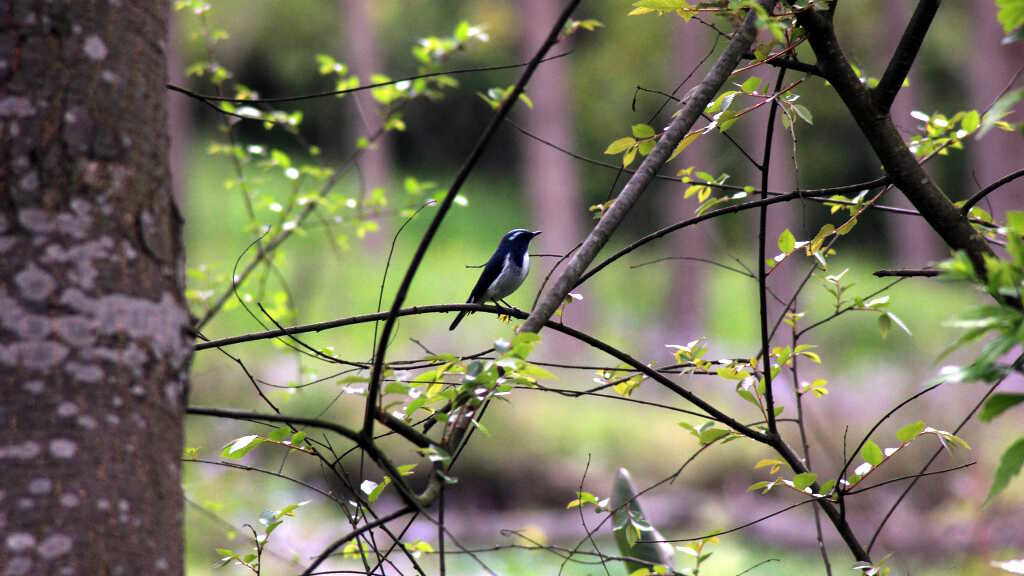
Ficedula superciliaris (Ultramarine flycatcher)
The Ultramarine flycatcher (Ficedula superciliaris) is one of the most eye-catching small birds observed within the Great Himalayan National Park (GHNP). Its striking ultramarine blue plumage, contrasted by a white belly and eye stripe, makes it easy to identify for bird enthusiasts exploring the park’s dense temperate forests. Including this bird among GHNP’s avian diversity highlights the region’s value as a sanctuary for Himalayan wildlife.
| Common name | Ultramarine Flycatcher |
| Scientific name | Ficedula superciliaris |
| Family | Muscicapinae (Flycatchers, Niltava) |
| Description | Male has deep blue upperparts and sides of neck/ breast, and white underparts; white super cilium in superciliaris of W. Himalayas. Female has greyish – brown breast – side patches and lack rufous on rump/ upper tail- coverts. First year male and some females, show blue on upperparts. Resident, breeds in Himalayas and NE India. It also breeds in forest; Winters in open woodland and wooded areas. |
Habitat and Distribution in GHNP
This species prefers elevations ranging from 1,500 to 2,700 meters and is often spotted during spring and summer in forested areas of Tirthan and Sainj valleys. It favors oak and mixed coniferous forests, where it perches on high branches while scanning for flying insects. Its presence in GHNP is seasonal, as it migrates to lower altitudes during colder months.
Identification and Behavior
The Ultramarine flycatcher is a small bird measuring about 12 cm in length. Males exhibit a rich blue upper body with a distinctive white brow line, while females are duller in color. They are known for their acrobatic insect-hunting behavior, catching prey mid-air with swift, darting flights. Their sweet, melodic song is a common sound during the breeding season.
Diet and Breeding
This flycatcher primarily feeds on insects and small arthropods. During the breeding season, which typically starts in late March, it nests in tree cavities or crevices, often reusing the same site across years. Both parents participate in raising the chicks, contributing to a high survival rate among fledglings in protected areas like GHNP.
Conservation Status
Though listed as Least Concern by the IUCN, the Ultramarine flycatcher benefits greatly from the undisturbed habitats found in GHNP. Its presence serves as a bio-indicator of forest health and underlines the importance of preserving high-altitude ecosystems.



